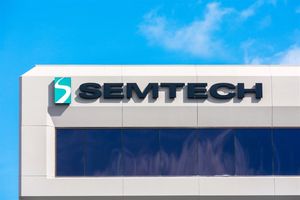
In an unprecedented move that signals a dramatic shift in U.S. industrial policy, the government has acquired a nearly 10% equity stake in semiconductor giant Intel (NASDAQ: INTC) as part of an $8.9 billion deal. This landmark investment, funded by converting previously committed grants, underscores a burgeoning trend of direct government intervention and investment in critical industries deemed vital for national security and economic leadership. The bold action highlights Washington's intensifying efforts to re-shore manufacturing capabilities and fortify domestic supply chains, particularly in the high-stakes semiconductor sector.
The investment has immediately sent ripples through the financial markets and ignited fervent debate among industry observers, policymakers, and private sector leaders. It not only provides a substantial financial bolster to Intel's ambitious domestic expansion plans but also establishes a new paradigm for federal involvement in the private sector. This move could very well be a harbinger of similar actions in other strategic industries, as the government seeks to ensure American technological autonomy and reduce reliance on foreign production.
Unpacking the US Government's Historic Investment in Intel
The U.S. government's significant foray into private enterprise materialized through an $8.9 billion investment in Intel (NASDAQ: INTC), which translates into the acquisition of 433.3 million shares of common stock at a discounted price of $20.47 per share, securing a 9.9% ownership stake. This substantial capital infusion isn't entirely fresh funding; rather, it's a strategic conversion of previously committed grants. Specifically, it comprises $5.7 billion in unpaid grants originally earmarked under the U.S. CHIPS and Science Act and an additional $3.2 billion from the Secure Enclave program. This brings the total federal support for Intel to a staggering $11.1 billion, inclusive of $2.2 billion in CHIPS grants already received.
Beyond the equity stake, the government has also secured a five-year warrant allowing it to acquire an additional 5% of Intel shares at $20 each, exercisable only if Intel's ownership of its foundry business dips below 51%. Critically, the government's ownership is designed to be passive, eschewing board representation or direct governance rights, though it will align with Intel's board on most shareholder issues. The deal also eliminates existing claw-back and profit-sharing provisions associated with prior CHIPS Act grants, aiming to provide Intel with permanent capital for its extensive U.S. investment plans.
The primary driver behind this robust governmental intervention is a multifaceted strategy to bolster domestic semiconductor production and reassert U.S. technological and manufacturing leadership. The investment directly supports Intel's ambitious plans to expand chipmaking capacity and advanced packaging projects across key U.S. states including Arizona, New Mexico, Ohio, and Oregon. This aligns squarely with the CHIPS and Science Act's overarching goal to incentivize the construction of domestic chip manufacturing facilities, thereby reducing the nation's vulnerability to supply chain disruptions originating abroad. From a national security perspective, the deal is considered integral to the country's economic and strategic defenses, ensuring that cutting-edge technologies crucial for defense and critical infrastructure are manufactured on American soil.
This intervention represents a pronounced shift in U.S. industrial policy, marking a deeper federal entanglement with a private tech titan. The administration views this as a mechanism for American taxpayers to gain a direct stake in the success of companies receiving substantial government support. Intel, a long-standing titan of the semiconductor industry, has faced considerable challenges in recent years, lagging behind competitors in key technological advancements for areas like smartphones and artificial intelligence, and experiencing significant losses in its chip-making division. The government's investment is thus also an attempt to stabilize and reinvigorate Intel, restoring its prominence as a leading player in the vital semiconductor sector and, by extension, U.S. dominance in chip technology. Initial market reactions saw Intel's stock experience a jump in trading following the announcement, although the long-term implications, including potential dilution for existing shareholders, remain a subject of ongoing analysis.
Winners and Losers in the New Industrial Landscape
The U.S. government's substantial investment in Intel (NASDAQ: INTC) reshapes the competitive landscape, creating clear beneficiaries and potential challenges for various players within the semiconductor ecosystem. Intel, while receiving a critical financial lifeline, also faces new complexities, particularly concerning its global operations and shareholder dynamics.
Intel stands as the most direct beneficiary, gaining enhanced financial stability and crucial capital to fuel its ambitious $100 billion investment plan in the U.S., particularly at its Arizona fabrication site. The $8.9 billion investment, combined with the elimination of claw-back provisions from prior CHIPS Act grants, provides a significant boost to its foundry business, enabling it to accelerate efforts in advanced manufacturing processes like 18A technology. This government backing, alongside a separate $2 billion investment from SoftBank, offers a powerful vote of confidence, potentially restoring trust among enterprise IT buyers and attracting external customers for its advanced manufacturing services. As the only semiconductor company with leading-edge logic research, development, and manufacturing capabilities in the U.S., Intel solidifies its status as a strategic national asset, vital for securing domestic chip production and bolstering national security. The wider U.S. semiconductor supply chain, including materials suppliers and AI packaging firms, is also poised to benefit from the overarching strategy to build a self-sufficient domestic ecosystem, anticipating increased demand and opportunities.
However, Intel's new partnership with the government also introduces potential downsides. The company has cautioned in an SEC filing that having the U.S. government as a significant stockholder could adversely impact its non-U.S. business, which currently accounts for a substantial portion of its revenue. This could trigger additional regulations, foreign subsidy laws, or restrictions in other countries, and lead to increased political scrutiny. Furthermore, the deal dilutes the voting influence of existing shareholders, and analysts raise concerns about potential conflicts of interest if corporate decisions prioritize national security over shareholder profitability. Critics also argue that government ownership, even passive, could distort market dynamics, giving Intel an unfair advantage and potentially stifling innovation from smaller competitors or deterring venture capital from funding disruptive startups.
Competitors such as Taiwan Semiconductor Manufacturing Company (TSMC) (NYSE: TSM) and Samsung (KRX: 005930), while not directly pressured to offer equity for CHIPS Act funding, could face long-term competitive challenges. The increased competitiveness of a government-backed Intel foundry, especially if the U.S. government encourages domestic sourcing for critical technologies, could divert future orders from these leading foreign foundries. Advanced Micro Devices (AMD) (NASDAQ: AMD), which relies on TSMC for its chip manufacturing, might face indirect pressure if the U.S. government pushes for American companies to source solely from Intel's foundry services. While AMD and Nvidia (NASDAQ: NVDA) have already agreed to revenue-sharing arrangements with the U.S. government on AI chip sales to China as part of export licenses, the long-term strategic implications for their manufacturing supply chains remain uncertain in this new landscape of heightened government intervention.
Industry Impact and Broader Implications: A New Chapter in Industrial Policy
The U.S. government's unprecedented investment and equity stake in Intel (NASDAQ: INTC) is far more than a simple financial transaction; it represents a pivotal moment in American industrial policy, with extensive ripple effects across the semiconductor industry and beyond. This action is deeply intertwined with broader global trends focused on securing domestic technological capabilities and mitigating supply chain vulnerabilities. It aligns seamlessly with the U.S. CHIPS and Science Act of 2022, which dedicated $52.7 billion to re-shore chip production and bolster research and development. The impetus is clear: national security concerns, driven by the geopolitical fragility of relying on a single region—Taiwan, where over 90% of leading-edge chips are currently manufactured—for critical semiconductor supply.
This strategic imperative sets a new precedent for government intervention, suggesting a global shift where nations increasingly support their domestic industries through direct investment, subsidies, and tax incentives to secure technological dominance. The investment aims to anchor Intel as the leading U.S.-based entity for advanced semiconductor manufacturing, fostering a robust domestic ecosystem that includes a wide array of materials suppliers and AI packaging firms. The overarching goal is ambitious: to triple U.S. semiconductor capacity by 2032, thereby ensuring a resilient supply of advanced semiconductors crucial for both defense and economic stability. However, this direct government involvement could trigger adverse reactions from international stakeholders, as Intel itself has warned, potentially impacting its significant non-U.S. revenue streams and leading to increased scrutiny or regulatory hurdles in other countries.
The regulatory and policy implications of this move are profound. It marks a clear departure from traditional grant-based support, effectively converting previously awarded funds into an equity stake, thus establishing a hybrid public-private partnership. While the government holds a 9.9% non-voting stake, the Commerce Department, as the shareholder, will generally align with Intel's board, with exceptions for decisions that might contravene the investment terms. This arrangement could dilute existing stockholders' voting rights and potentially limit future transactions favorable to shareholders. Moreover, by removing profit-sharing and claw-back provisions from earlier CHIPS Act grants, immediate financial accountability to taxpayers might be reduced, though heightened public and political scrutiny of Intel's operations is inevitable. Questions have also emerged regarding the legal basis under the CHIPS Act for the White House to take an equity stake, potentially opening avenues for litigation.
Historically, while the direct equity stake in Intel for strategic national security purposes is often described as "without precedent," there are comparisons to earlier government interventions. The 2008 bailouts of General Motors (NYSE: GM), Chrysler, and AIG (NYSE: AIG) saw the government take significant equity stakes to prevent catastrophic collapses, albeit under crisis conditions. A more relevant parallel in the semiconductor sector is the government's support for SEMATECH in the 1980s, which played a crucial role in restoring U.S. competitiveness in memory chips through government-backed R&D and collaboration. However, the Intel investment signifies an evolution in industrial policy, moving beyond mere crisis intervention to active, strategic investment in private industry to secure national interests in an age defined by AI and intense global technological competition. It demonstrates a willingness by the U.S. government to take on direct risk to ensure domestic leadership in critical technological sectors.
What Comes Next: Navigating a New Industrial Frontier
The U.S. government's substantial equity investment in Intel (NASDAQ: INTC) inaugurates a new era of industrial policy, setting in motion a cascade of short-term and long-term possibilities, strategic adaptations, and market dynamics that will reshape the semiconductor landscape for years to come. In the immediate future, Intel gains critical financial stability. The $8.9 billion infusion, largely a conversion of prior CHIPS Act grants, provides vital capital, reducing reliance on debt and directly bolstering its $100 billion domestic expansion plans, particularly the Arizona 18A chip plant slated for high-volume production by late 2025. This government backing is also expected to restore confidence among investors and enterprise IT buyers, a much-needed boost given Intel's recent struggles. However, existing shareholders face immediate dilution as new shares are issued at a discounted price for the government's acquisition. For the broader U.S. semiconductor industry, this translates to an accelerated drive towards increased domestic manufacturing capacity, crucial for national security and resilience against global supply chain disruptions.
Looking further ahead, the long-term implications are profound. This investment provides Intel with a stable funding stream, enabling sustained research and development in advanced process technologies like 18A and 14A, critical for competing with industry leaders such as TSMC (NYSE: TSM) and Samsung (KRX: 005930). Intel’s role is elevated to that of a "strategic national asset," aligning its long-term success directly with U.S. national security and economic interests. However, this also introduces potential risks: Intel's decisions could become increasingly swayed by political rather than purely commercial considerations, potentially leading to inefficiencies, slower innovation, and lower stock multiples. The success of Intel Foundry Services in attracting high-scale external customers will be paramount for the economic viability of its new fabs. For the U.S. semiconductor industry, the goal of tripling domestic manufacturing capacity by 2032 hinges significantly on Intel's expansion, seen as vital for maintaining U.S. leadership in artificial intelligence. Conversely, there's a risk that government ownership, even passive, could distort market dynamics, granting Intel unfair advantages and potentially stifling innovation from smaller competitors.
Strategic pivots will be essential for Intel. A primary focus must be aggressively securing major fabless chip designers as customers for its advanced foundry services. The government, in turn, may subtly "encourage" U.S. chip designers to utilize Intel's foundry. Intel will also need to expertly balance commercial profitability with the national security mandates and political priorities of its largest shareholder. Adapting its international sales and partnership strategies to mitigate potential adverse reactions and regulatory hurdles arising from its U.S. government ownership will be crucial. For the U.S. government, clearly defining and adhering to the boundaries of its "passive" ownership will be key to avoiding direct control that could harm Intel's agility. Establishing a consistent industrial policy across administrations and managing potential global repercussions from this new form of state capitalism will also be vital.
Market opportunities could emerge from the rapidly expanding AI chip market, where Intel's advanced processes and AI-specific architectures could capture a larger share. Increased demand for secure and trusted chips for defense and critical infrastructure will also benefit Intel as a key domestic supplier. However, significant challenges remain, including intense competition from global powerhouses like TSMC, Samsung, Nvidia (NASDAQ: NVDA), and AMD (NASDAQ: AMD). The risk of foreign governments imposing "foreign subsidy laws" or other restrictions on Intel's international operations is also a considerable threat. Ultimately, the long-term success of this unprecedented partnership will hinge on Intel's ability to execute its technological roadmap and market strategy, coupled with the U.S. government's capacity to manage its new shareholder role without hindering market efficiency or global competitiveness. The coming months will offer initial clues as to whether this bold experiment will catalyze a U.S. semiconductor renaissance or lead to unforeseen complications.
The Dawn of a New Economic Policy: A Concluding Assessment
The U.S. government's $8.9 billion investment and subsequent 9.9% equity stake in Intel (NASDAQ: INTC) marks a watershed moment in American economic policy, fundamentally reorienting the relationship between the state and strategic industries. The primary takeaway is a clear and decisive shift towards an interventionist industrial policy, driven by national security imperatives and the urgent need to re-shore critical semiconductor manufacturing. This financial infusion, largely a conversion of prior CHIPS Act grants, provides Intel with crucial capital, de-risking its ambitious $100 billion domestic expansion plans and reinforcing its role as a cornerstone of U.S. technological autonomy.
Moving forward, the market will intently watch how this unprecedented partnership plays out. The investment is poised to accelerate Intel's technological roadmap, particularly its pursuit of process technology leadership with its 18A node by 2025, and bolster its efforts in the rapidly growing AI chip market, projected to reach $500 billion by 2028. However, questions persist regarding Intel's ability to secure large-scale external foundry customers and regain market share from formidable rivals like AMD (NASDAQ: AMD) and Nvidia (NASDAQ: NVDA). The dilution of existing shareholders and the potential for increased regulatory scrutiny, particularly in international markets, add layers of complexity to Intel's future trajectory.
The lasting impact of this decision could usher in a more resilient and geographically diversified global semiconductor supply chain, with a stronger domestic manufacturing base in the U.S. Yet, it also sets a powerful precedent for government involvement in private enterprise, a notable departure from traditional U.S. capitalist norms. This raises significant questions about the potential for "state capitalism" if similar deals become more widespread, fundamentally altering the competitive landscape and the drivers of innovation. For Intel, this is undeniably a lifeline that could accelerate its turnaround efforts and re-establish its position as a leading-edge chip manufacturer, but it comes with the inherent challenges of navigating political priorities alongside commercial objectives.
Investors should closely monitor Intel's execution of its turnaround strategy, particularly progress on its 18A process technology and the timely completion of new fabs in Arizona and Ohio. Key metrics to watch include the financial performance of Intel Foundry Services and its success in attracting major external customers. Furthermore, legislative and policy developments, especially any extensions of CHIPS Act tax credits beyond 2026, will be crucial. Finally, the geopolitical ramifications of this government stake, including reactions from other countries and potential trade restrictions, will undoubtedly influence Intel's international sales and overall stock performance. The coming months will offer vital insights into whether this bold experiment successfully catalyzes a U.S. semiconductor renaissance or introduces unforeseen complexities into the market.





